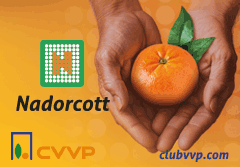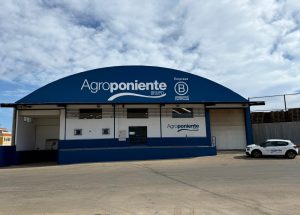The cooperative from Huelva is a strong advocate of these practices to protect berry crops from the main pests currently affecting the sector: red spider mite, aphids, thrips, and caterpillars.
In fact, 100% of its raspberry production is now grown under biological control, as well as 80% of its blueberry and 30% of its strawberry crops. All of this is overseen by Koppert’s technical specialists.
Enrique Muñoz, Marketing Director of the cooperative, states: “At Fresón de Palos, we focus on the three pillars of sustainability. Social, because we care for the 7,000 people we work with. Economic, because we have an impact on rural areas and strive to secure fair prices for our member-growers. And environmental, because farmers are the ones who care the most for the environment. We’ve proven this through water savings and now with biological control, in collaboration with Koppert. We’re proud to reduce the use of chemicals and offer consumers a healthier, more sustainable, and high-quality product.”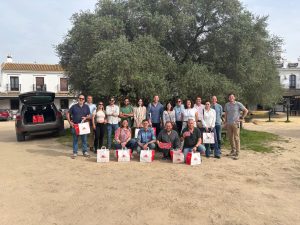
Gonzalo García, General Manager of Koppert for Western Spain and Portugal, emphasizes: “Over the past three years, we’ve developed a reliable protocol with Fresón de Palos for pest control in general, and Scirtothrips in particular. We’re working on around 150 hectares in this exciting project. Scirtothrips is currently the most problematic pest, as it’s a completely different species from Frankliniella occidentalis, which has historically been common in this area. This has led us to adapt how we manage beneficial insects.”
Strawberries and raspberries
During this visit to observe the behavior of Koppert’s beneficial insects in the actual fields, we started with the strawberry and raspberry crops managed by José Manuel and Cristian Cumbreras.
José Manuel “Chele” Cumbreras tells us: “I’ve been working with ‘the little bugs’ for 20 years and I’m passionate about this method. They work 24 hours a day. You need patience to see results and the support of trained professionals. We’re located next to a natural area like Doñana and manage 550,000 plants, so our commitment is 100% natural.”
Cristian, José Manuel’s son, explains: “AI has entered agriculture and, in our case, one example is this thrips monitor, which detects both Scirtothrips and Frankliniella. The camera takes one or two pictures a day and, based on the parameters we’ve programmed into the AI, it identifies which pest is present and in what quantity. This way, we can release Orius or Swirskii in advance. The next step would be to take a photo directly with a mobile phone, upload it to an app, and have it analyze our other fields.”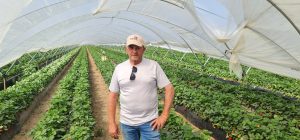
He adds: “Adapting to integrated pest management has been a challenge because there’s always a new pest, and no two years are the same, but we’ve learned to adapt and evolve too.”
“Back in the day, biological control wasn’t widely adopted due to its higher cost compared to chemical products. Today, Koppert offers us a fixed price per hectare per year, and for us, it’s actually cheaper than using chemicals. Plus, once you gain the necessary knowledge, you’re less afraid of pests because you know how to deal with them quickly.”
The Koppert manager points out that “March is a turning point for growers working with integrated pest management. Pests start reproducing faster, and beneficial insects take longer to establish themselves due to the light and temperature. After March, beneficial insects are well established, and you stop worrying about pests. On the other hand, those relying on chemicals need to spray weekly, or even twice a week.”
Blueberries
Alfonso Domínguez, blueberry grower and board member at Fresón de Palos, explains: “The big issue with chemical solutions is that if the pest comes back, you’re out of options because of resistance.”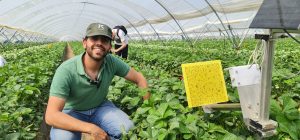
“Here, during harvest, aphids are our main concern. And during the plant’s growth, Frankliniella thrips. If it strikes once the plant is mature, it’s not as harmful, but if it hits while it’s still growing, it causes branching and reduces berry size.”
Koppert’s beneficial insects
Koppert’s first biological control strategy against Scirtothrips aurantii in berry crops is based on the combination of two natural enemies: Amblyseius swirskii and Orius laevigatus.
The effectiveness of this combination lies in Koppert’s identification of the optimal release timing and appropriate dosage.
RELATED NEWS: Koppert effectively controls pests and diseases in onions
On one hand, Amblyseius swirskii is applied using the exclusive Swirskii Ulti-Mite aluminized sachets. On the other, the predatory bug Orius laevigatus is used in its commercial format Thripol-L.
García concludes: “In 99% of the farms in Huelva, we work with a fixed-program approach, with a price per square meter. From the very beginning, growers know what the cost per hectare will be and which beneficial insects they’ll need.”












